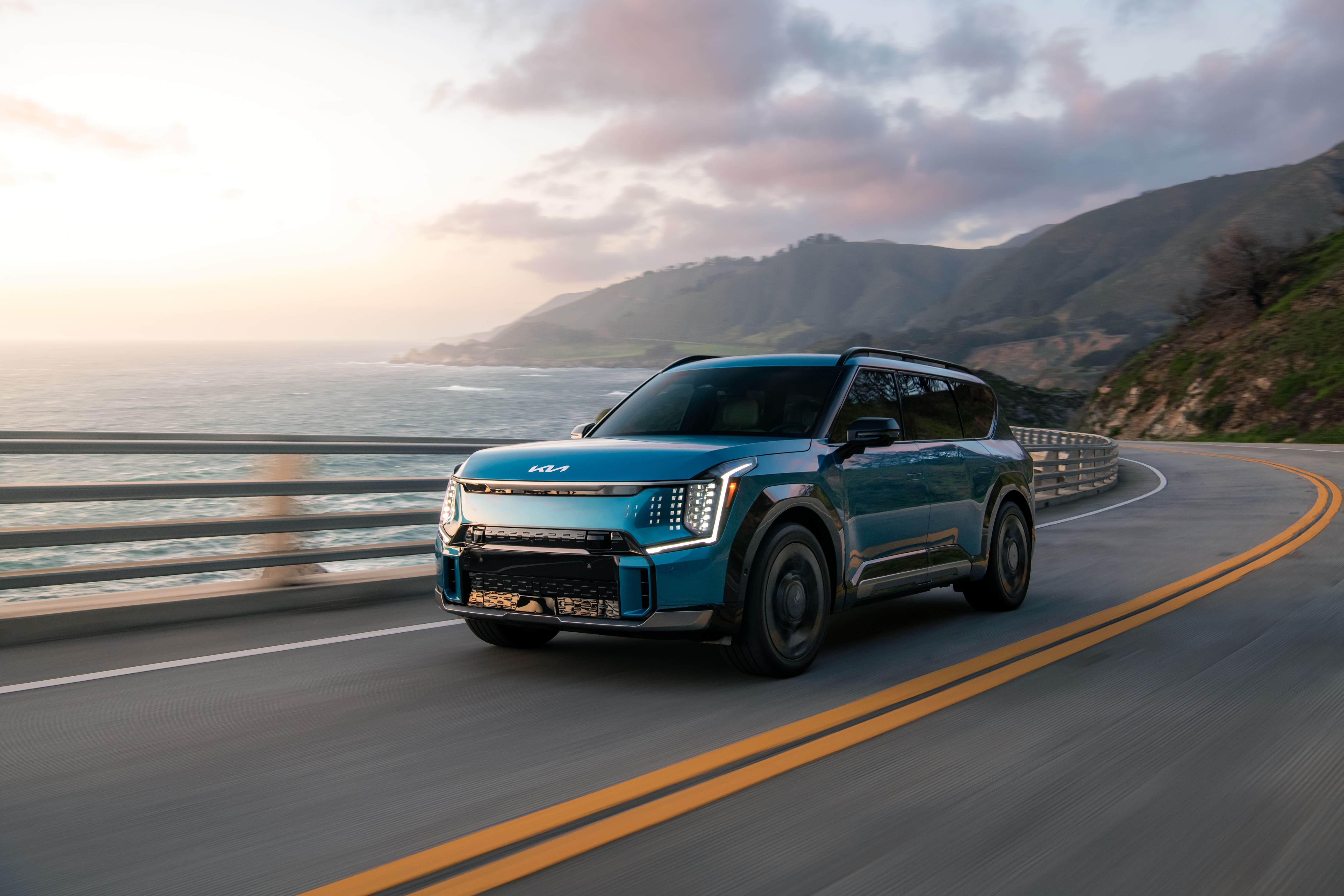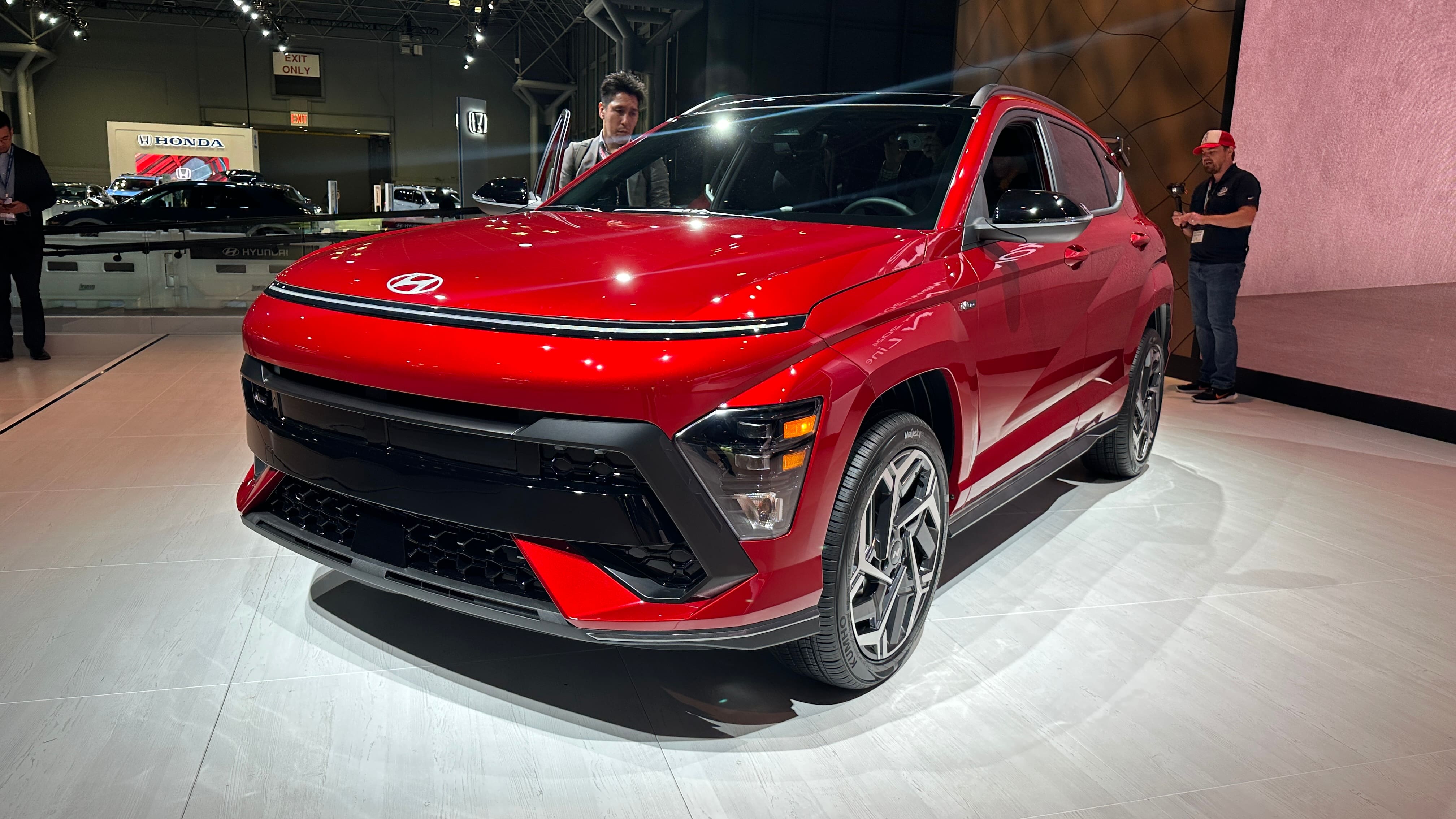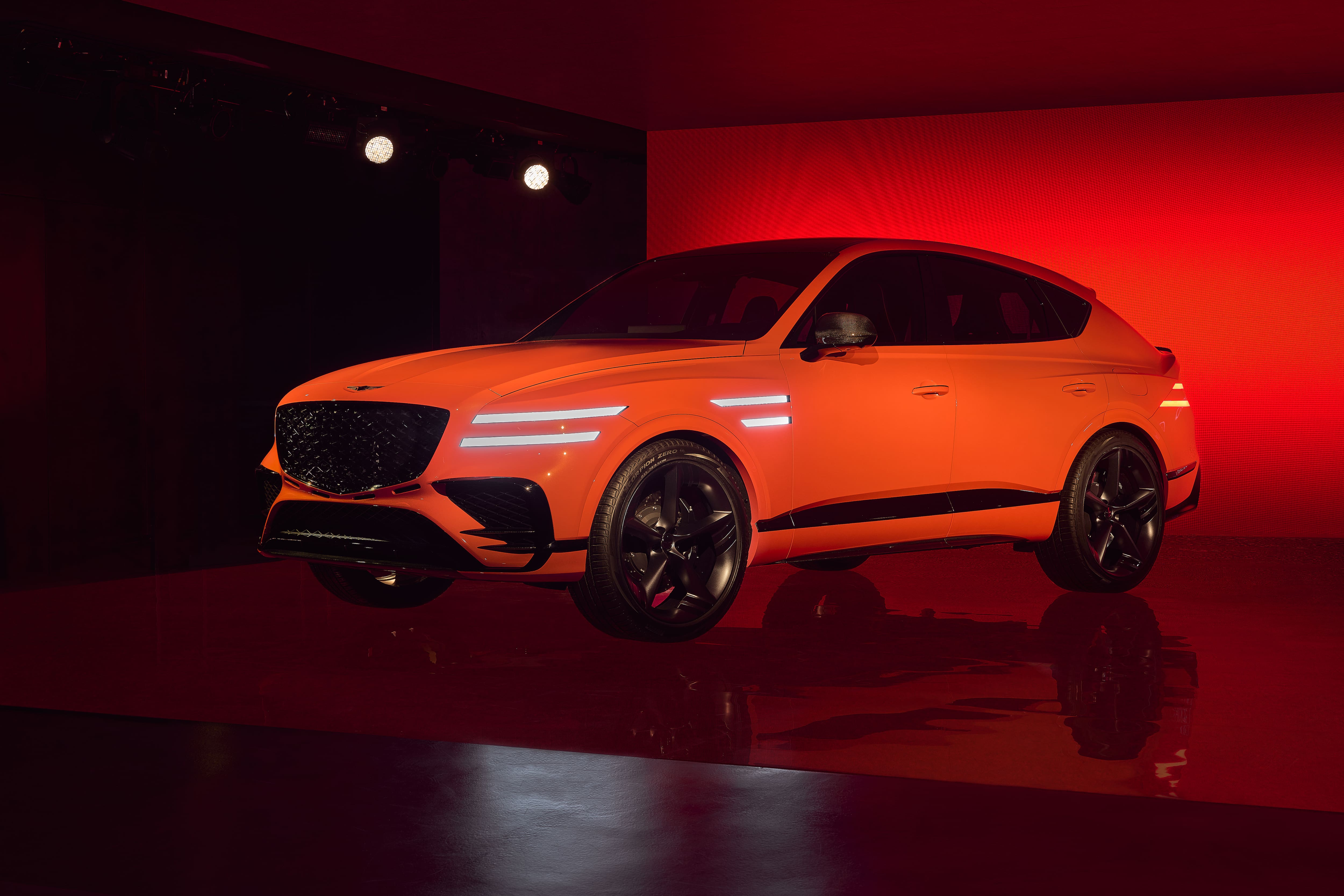Discover more about S&P Global's offerings
Customer Logins
Obtain the data you need to make the most informed decisions by accessing our extensive portfolio of information, analytics, and expertise. Sign in to the product or service center of your choice.
Customer Logins
BLOG
Apr 11, 2023
New York Auto Show 2023: In case you missed it
While the auto show business model remains in flux, the recent New York International Auto Show featured several all-new production and concept vehicle introductions. Though the overall number of intros was low compared to historical norms, it is reflective of the industry's effort to promote its transition to an EV-dominant market, while still selling millions of legacy internal-combustion vehicles. (Note: Pricing for these vehicles will be announced closer to when they go on sale.) Among the new vehicles introduced:
Ram 1500 REV
What It Is
Ram's first battery electric full-size pickup brings full electrification to the Ram brand and introduces the new Stellantis family STLA-Large vehicle platform.
Key Features
With another year before the REV arrives, tech details were selective. There will be two battery options, one targeting about 350 miles and the other with 500 miles of range. It will use two electric motors, one at each axle and both 250kW. As an EV, all the recent hot buttons are included. The Ram REV will offer vehicle-to-load and bi-directional charging, and be able to provide power to a house, tools on a job site, or another EV. The charging system will be able to add about 110 miles of range in about 10 minutes on a DC fast charger, with its 800-volt system and 350kW charger.
The truck will boast 14,000 pound towing capacity and up to 2,700 pounds payload capacity, figures higher than some of its internal combustion engine versions (no towing range figures were made available). Infotainment takes a step up, including new center stack and driver cluster screens, as well as adopting the front-passenger side screen launched in the Stellantis family with the Jeep Grand Wagoneer. Advanced driver-assist features will include optional hands-off/eyes-on driving functionality as well as an automatic parking system.
Why It's Important
The transformation of the US light-vehicle market from reliance on internal combustion engines to EV propulsion has begun, and over time it will need multiple options in nearly all segments we have today. Ram is the third of the traditional automakers to announce a modern, full-size EV pickup truck, but has come with impressive early specifications. Expectations are largely that the full-size pickup truck EV subset will see similar ranking as the ICE versions, with the Ford brand leading the volume pack, followed by Chevrolet, then Ram and GMC. However, all three companies are in the process of growing and scaling EV production. How quickly these brands get to scale could affect near-term sales rankings.
Our Take
The launch product specifications are competitive, focused on the areas that truck buyers care about and leveraging technology from across the corporate portfolio to create the top Tungsten trim level. Still, it doesn't arrive for another year and Stellantis has been criticized as maybe late to the game. However, by time the REV is available to consumers, there will be incremental improvements in the charging infrastructure and consumer education, increasing the pool of buyers ready to make the jump to electric. Ram's positioning as a fast-follower could put the brand in a stronger position for being able to meet growing demand. At least in the first couple of years, isn't likely to have any problem selling as many as they can make.

Source: Stephanie Brinley
Kia EV9
What It Is
Kia's second dedicated EV for the US is the EV9 three-row crossover. Based on the E-GMP platform of the EV6 (and sister brands Hyundai Ioniq5 and Ioniq6 and Genesis GV60), the Kia is due on market as the first three-row EV from a mainstream brand. Its blocky exterior design is meant to move the brand forward while maintaining a family resemblance. The EV9 is due to arrive in the US in the third quarter of 2023, with production in the US starting in mid-2024.
Key Features
The EV9 is slightly longer than the Telluride, similar in width and height. The extra inch in length improves cargo space but does not change available space significantly. The flat floor, however, provides the opportunity to develop that space differently from traditional SUVs. In some markets, the EV9 will offer front seats which can be turned to face the second or third rows; safety concerns are expected to nix some of those ideas for the US.
The EV9 will be offered with a 76.1-kWh battery with a single 215 horsepower motor, or a 99.8-kWh battery available in single- or dual-motor configurations. The star of the range will be dual-motor, all-wheel-drive, 379-hp EV9 GT. The single-motor large battery pack version is expected to have about 300 miles of range; final EPA figures will be released closer to launch. Maximum DC charging speed is up to 230kW, enabling 10%-80% charge in about 25 minutes, depending on the charger.
Like the EV6, the EV9 will offer vehicle-to-load charging. The EV9 gets the next iteration of Kia's infotainment and connectivity - the Connected Car Navigation Cockpit operating system. With this architecture, over-the-air updates will be available, unlocking potential for feature updates (potentially fee or subscription based) over time. Digital Key has been improved so that drivers no longer need to hold the smartphone next to the car; it can read the phone if in a pocket or bag.
Lidar-capable driver assist technologies are advanced with a new highway drive assist and improved lane-keeping assist. In international markets, EV9 (along with Genesis) is expected to offer Level 3 driving assistance. It is not clear if the L3 system will be available in the US. Currently, only one Mercedes-Benz model offers Level 3 - and only in Nevada where the company has been given regulatory approval to do so.
Why It's Important
The transition toward electric vehicles as a primary or dominant propulsion system takes time, and product, as noted. The Hyundai Motor Group is rapidly deploying new vehicles on the E-GMP architecture, across the Kia, Hyundai, and Genesis brands, while enabling each brand to deploy design and technology tailored to its chosen brand personalities. For Kia, making its next EV a three-row utility vehicle puts them ahead of other mainstream brands eyeing this segment. In the US, EV9 sales are expected to be dwarfed by the Telluride for the next several years, as the production base for EVs is still being developed. The EV9 will see US production in 2024, which increases potential that it will be eligible for some portion of the US federal EV incentives.
Our Take
Kia is taking an aggressive approach to electrification, while still maintaining internal combustion engine vehicles that are expected to make up about 58% of the US light-vehicle market in 2030, according to S&P Global Mobility forecasts. Kia offers some products with multi-energy platforms, with ICE and hybrid solutions, as well as expanding full EV offerings. While premium brands focus on moving more rapidly to a full EV product lineup, the lower price points and global scale of a brand like Kia makes offering a mix of solutions necessary. Against this backdrop, however, the EV9 points more toward Kia's long-term future than the recently refreshed (but still hot-selling) Telluride.

Source: Kia
Hyundai Kona
What It Is
The second-generation Kona and Kona EV small utility vehicle will hit US dealerships in late 2023. Hyundai's stand featured the N Line and Electric trims prominently, juxtaposing the future-forward EV as well as the performance-edged internal-combustion versions.
Key Features
Kona will continue to be offered with three propulsion systems:
the normally aspirated entry 2.0-liter 4-cylinder and the
195-horsepower 1.6-liter 4-cylinder. Not yet shown is a likely
replacement for the first-generation, 300-horsepower N version (not
to be confused with the N-Line trim package). For this generation,
Kona launches with the Limited as its base model, working to
position itself away from the base, entry-level space. The ICE Kona
arrives in mid-2023, with the Electric coming in third
quarter.
Hyundai says that with this generation, it prioritized developed of
the Kona Electric, which seems visible in the more-closed front
fascia styling. The Electric will have a 64.8-kWh battery, and is
expected to deliver 260 miles of range, similar to that of the
first generation. The redesigned version adds vehicle-to-load
capability, i-Pedal (one-pedal) driving mode, a smart regeneration
system and active grille shutters. One limiting factor: As the Kona
Electric is not on a dedicated EV platform, it is a 400-volt
architecture and will take about 43 minutes to charge from 10% to
80%.
Kona updates include dual 12.3-inch display screens, digital key
and over-the-air updates from Hyundai's next-generation
infotainment system. The Kona is 5.7 inches longer, has a wheelbase
that is 2.3 inches longer and it is an inch wider than the first
generation, following consumer feedback and clearing more space to
the smaller Venue. Though the Kona offers a strong level of driver
assist systems, it will not rise to the level being offered on
larger Hyundais.
Why It's Important
Hyundai Kona slots between the entry Venue and the compact Tucson. With the Kona, Hyundai offers a spectrum of utilities across the size and pricing landscape. Kona's execution can help build Hyundai loyalist buyers, or turn them away if not executed to customer expectations. Pricing for the new generation is a few months away; note any increases will be balanced by more content with this generation. Keeping pricing in check could put Hyundai in a strong position as buyers face increasing interest rates and economic headwinds this year, making affordability a more significant issue.
Our Take
The current generation sales peaked at about 90,000 units in the US in 2021, but the new generation will not likely see this level as Hyundai expands its product portfolio with more EV-specific offerings. Hyundai is not due to add a new dedicated EV in the subcompact CUV US segment until 2026; the Kona EV carries on as Hyundai's most affordable EV. As the vehicle is imported, it is not expected to be eligible for the US federal tax credits, leaving Hyundai little room for discounting and at a potential disadvantage for a price-sensitive segment. The internal combustion engine version goes up against vehicles like the Chevrolet Trailblazer and Buick Encore GX, which are also both new for the 2024 model year. This segment also sees the all-new Dodge Hornet, which is offered with an internal combustion engine version and a plug-in hybrid version which may well prove to be about the same price as the Kona EV.

Source: Stephanie Brinley
Genesis GV80 Coupe Concept
What It Is
Based on the current GV80, this faster-roof version of the flagship utility vehicle is headed for production, likely carrying many of this concept vehicle's cues.
Key Features
The concept featured an update to the GV80 design, though it continues Genesis quad lights and "Double G-Matrix Patterned Crest Grille," with four slots in the bumper which optimize cooling. There is a carbon fiber roof, with an upper rear spoiler and spoiler lip to enhance performance aerodynamics. The GV80 Coupe Concept featured four bucket seats, each with a carbon fiber backrest painted in body color, and a strut brace behind the second-row bucket seats to reinforce the body stiffness - and suggests that such an improvement might be necessary. Powertrain, feature, and dimensional specifications were not provided.
Why It's Important
Genesis is a comparatively young luxury brand, still building out its portfolio. The brand says that this step is meant to be the start of a performance portfolio, with sedans and utility vehicles already offered. Genesis is also learning from the established brands, and the GV80 coupe will provide a more dynamic look and attitude to complement the GV80. As a concept, not many specifications were detailed, but the current powertrain lineup is expected. As the also-related G80 sedan has a full-electric version, it is possible to the production GV80 coupe also will boast electrification. Genesis is among the brands aiming to be all-electric by 2030; depending on what direction Genesis goes with the production powertrain, this could be the last new ICE product Genesis offers.
Our Take
Genesis development is largely progressing well, thanks in part to the ability to draw from the scale of parent Hyundai and the patience the company has shown with the development process. Growing its portfolio toward a niche or performance arena is the next logical step. The next-generation GV80 is due about 2026, this first GV80 Coupe may have a relatively short shelf life, and therefore carry only as much production differentiation from the GV80 as necessary.

Source: Genesis
This article was published by S&P Global Mobility and not by S&P Global Ratings, which is a separately managed division of S&P Global.
{"items" : [
{"name":"share","enabled":true,"desc":"<strong>Share</strong>","mobdesc":"Share","options":[ {"name":"facebook","url":"https://www.facebook.com/sharer.php?u=http%3a%2f%2fstage.www.spglobal.com%2fmobility%2fen%2fresearch-analysis%2fnew-york-auto-show-2023-in-case-you-missed-it.html","enabled":true},{"name":"twitter","url":"https://twitter.com/intent/tweet?url=http%3a%2f%2fstage.www.spglobal.com%2fmobility%2fen%2fresearch-analysis%2fnew-york-auto-show-2023-in-case-you-missed-it.html&text=New+York+Auto+Show+2023%3a+In+case+you+missed+it+%7c+S%26P+Global+","enabled":true},{"name":"linkedin","url":"https://www.linkedin.com/sharing/share-offsite/?url=http%3a%2f%2fstage.www.spglobal.com%2fmobility%2fen%2fresearch-analysis%2fnew-york-auto-show-2023-in-case-you-missed-it.html","enabled":true},{"name":"email","url":"?subject=New York Auto Show 2023: In case you missed it | S&P Global &body=http%3a%2f%2fstage.www.spglobal.com%2fmobility%2fen%2fresearch-analysis%2fnew-york-auto-show-2023-in-case-you-missed-it.html","enabled":true},{"name":"whatsapp","url":"https://api.whatsapp.com/send?text=New+York+Auto+Show+2023%3a+In+case+you+missed+it+%7c+S%26P+Global+ http%3a%2f%2fstage.www.spglobal.com%2fmobility%2fen%2fresearch-analysis%2fnew-york-auto-show-2023-in-case-you-missed-it.html","enabled":true}]}, {"name":"rtt","enabled":true,"mobdesc":"Top"}
]}


